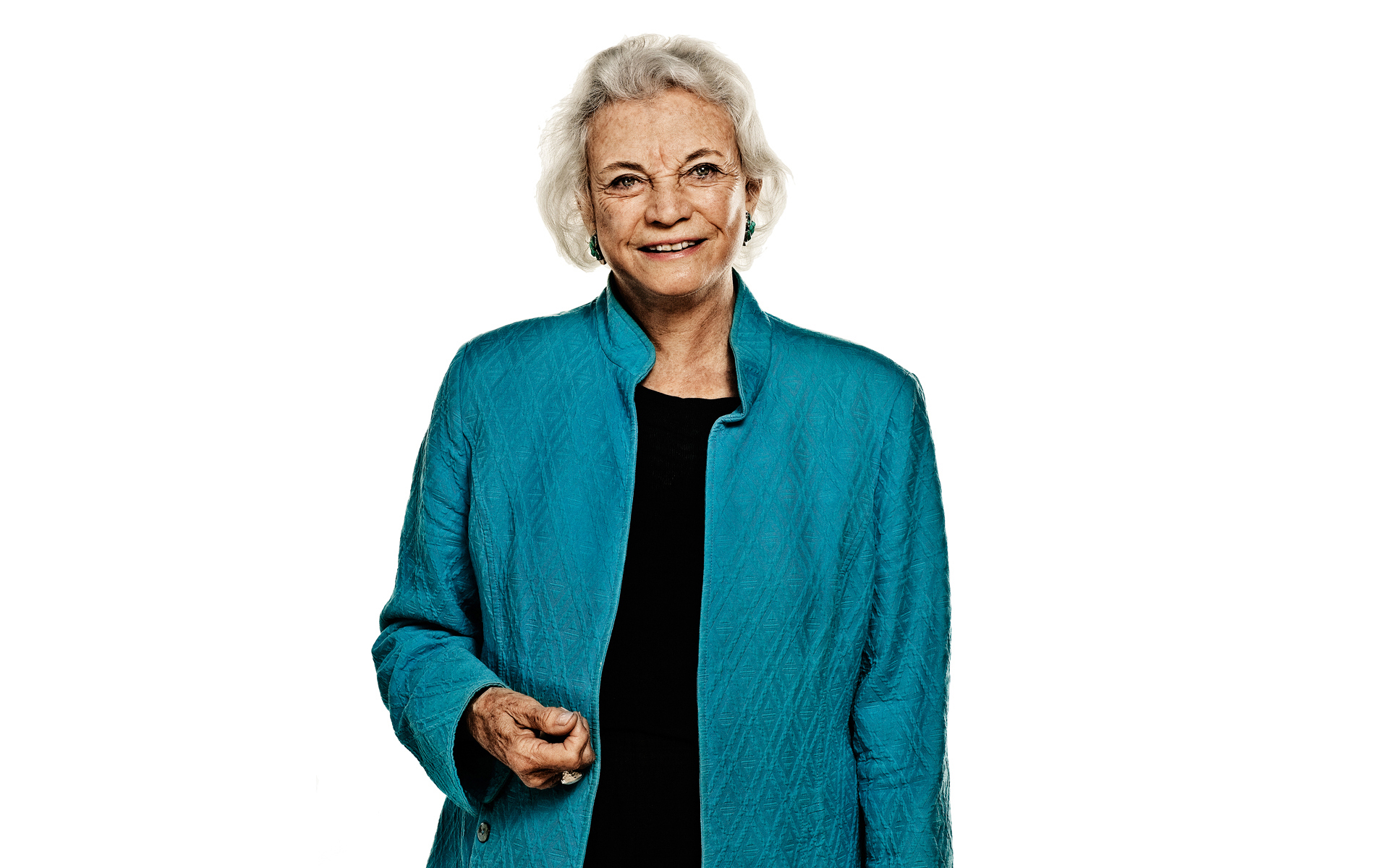Photographing Sandra Day O’Connor was unlike any other photo shoot I have ever done before or since. It began with a phone call from The New York Times, asking me to meet Justice O’Connor at her house and create a portrait of her against a white background. It was a photo shoot that I had become very accustomed to, as I knew the exact lighting and approach I wanted to use going into it. We would have one hour to set up, one hour to photograph, and 30 minutes to wrap the set, which was more than enough time to create a series of portraits with someone. For that reason, I decided not to take my normal assistants to the photo shoot but to take my lawyers, as I knew Sandra O’Connor was so important to them.
We packed all the gear into my SUV and headed out to Justice O’Connor‘s house in Paradise Valley, Arizona. Upon arriving at the guard shack for the neighborhood where she lived, the guard on duty notified me that Justice O’Connor would need to leave earlier than planned, as her husband’s health was fading, and she wanted to be with him. I said that that was completely fine and that we would be efficient so as not to take up any more time than necessary for the photos. What awaited us at the house still baffles me to this day. Upon pulling into Justice O’Connor‘s driveway, there she, the 101st Supreme Court Justice, stood wearing a pink bathrobe and matching pink slippers. I can still remember my friends/lawyers in the car freaking out about what was happening. I pulled up next to her, rolled down the window, and she introduced herself and immediately asked if she could help carry any gear into the house. I told her that I appreciated the offer, but we would take care of it all. In one of the most grandmotherly gestures ever, she said we could walk through the garage as long as we took off our shoes when we walked over the newly cleaned white carpet to set up the photo shoot on her back patio. She also asked if there was any chance we could wrap the photo shoot in one hour, as she wanted to try and meet her husband at the assisted living center for lunch. I told her that it would not be a problem and immediately got to loading the gear onto the patio. This was such a tight schedule that softboxes were hung with only half of their rods, as assembling them completely would have taken too long. Adding to this, my assistants were actually lawyers and not as familiar with the equipment as someone on a regular photo shoot would be. Nonetheless, we set up the lighting as Justice O’Connor got dressed for the portrait.
Soon after we were all set, Sandra Day O’Connor walked out and was ready for the images to be taken. I promised her that I would not keep her in front of the camera longer than needed, and she sincerely thanked me for that. At that moment, with the lighting dialed in, I started shooting. Only one minute and 43 seconds elapsed between the first image I created of her and the last image. However, I knew we had captured something special in those images, and when they were sent to The New York Times, there were 16 select pieces created in under two minutes. Keeping true to my promise, I did not ask her to stay around and told her to please enjoy her time with her husband. In one of the most trusting moves I have ever witnessed, she said that we could take our time packing up and that she was going to the assisted-living center, trusting us to lock up the house before we left and leave the key with the guard. This level of trust is something I have never encountered with someone I had only met an hour prior. However, in the short time that I was able to spend with Justice O’Connor, we were able to build a brief friendship that I will treasure for life.
Something that not many people know is that late in her life, she was still driving. When she left that day, she was in a late ’90s Hyundai Sonata with the license plate reading USSC 101. I want you to think about this for a second… The 101st Supreme Court Justice of the country was driving a car that cost less than the camera I was photographing her with. Anyone who saw that license plate would have been completely correct to think it had nothing to do with the Supreme Court, but behind the wheel was the late Sandra O’Connor.
I will miss her, but in many ways, I strive to live in a way that celebrates how she viewed life. Accomplishments are important, but legacy is everything. Her legacy will be her contribution to making generations after her believe in the law and its fairness to the public. I can only hope to inspire half the number of people that Sandra O’Connor did.

